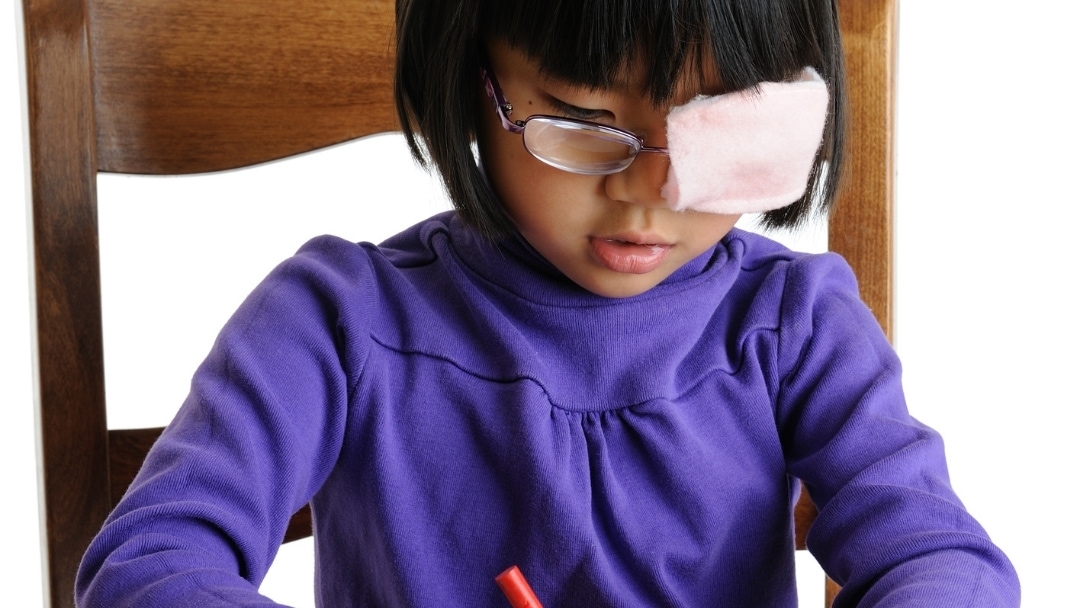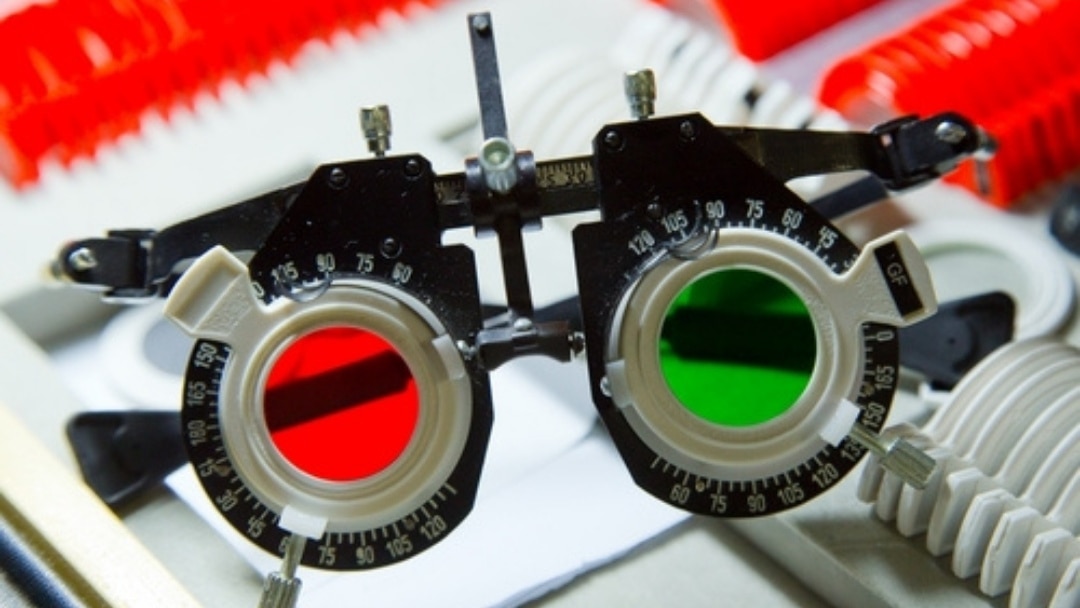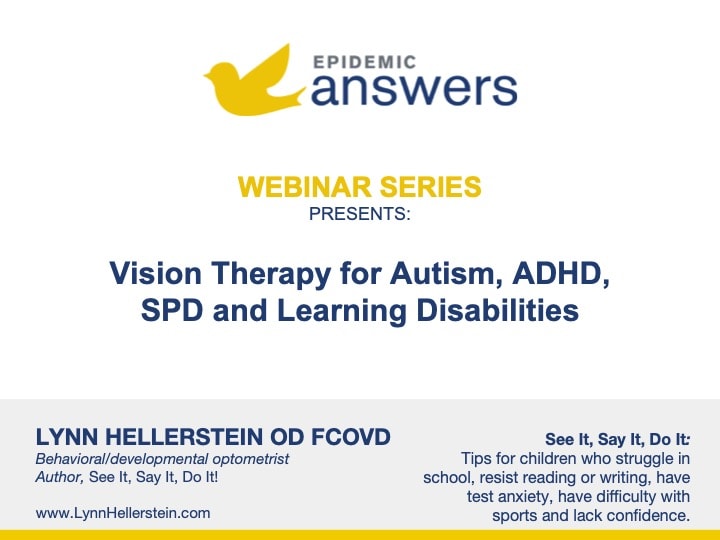Sally Brockett, MS, Director of the Innovative Developments for Educational Achievements, Inc. (IDEA) discusses how a developmental optometrist can help with autism and learning disabilities.
How Does Vision Develop?
Just like language and motor skills, vision follows a sequence of developmental stages. Infants are not born with the visual abilities they will need in order to function successfully in the world. These abilities must develop through a variety of experiences. At any point during this process, visual development may be hindered, altered or completely stopped, by injury, illness, emotional trauma, lack of appropriate stimulation, or other unidentified causes.
When language and/or motor skill development is interrupted, parents and teachers seek to identify the problem and intervene with therapy or training activities designed to assist the child in overcoming the delay. A similar approach is available to parents of children who have inadequately developed visual abilities.
When we speak of vision, we are referring to the ability of the brain to organize and interpret the information seen so it becomes understandable or meaningful. Even individuals with good eyesight (20/20 acuity) can have undiagnosed vision problems that make it difficult to correctly comprehend the visual message. If sensory input, whether it is visual, tactile or auditory, is received in a distorted or faulty manner, the behaviors that are based on that input are likely to be distorted.
Many of the symptoms of autism, and behavior problems associated with learning disabilities, may actually be compensatory attempts to manage in spite of an inefficient visual system, and other systems that fail to provide understandable, reliable information.
Since vision development follows predictable stages, it is a process that can respond to training if disruptions occur. Vision therapy is a process of retraining the visual system so it functions with optimal efficiency. The process follows a sequence of steps aimed at improving the visual system.
Signs of Vision Problems
Vision dysfunctions often go unrecognized or misdiagnosed because people do not understand how vision relates to behavior and can affect the overall performance of the individual. In addition, many people develop ways to compensate for their visual difficulties, which masks the fundamental cause of the problem.
So how do parents know if their child has a problem with visual development? Dysfunctions in the visual system can lead to a variety of problems with behavior, learning, social interaction, health, and on the job. There are also many observable clues that can indicate visual difficulties including:
- Eyes that cross or turn, even a little bit;
- Tilting, turning the head, covering or closing an eye in order to use only one eye;
- Looking at things out of the corner or side of the eyes;
- Blinking, grimacing, squinting and other compensating behaviors;
- Visual stimulation behaviors; finger flicking; obsession with spinning, patterns, or other visual effects; sighting along linear objects (counter edges, telephone wires);
- Short attention span, avoidance of close work and activities;
- Low frustration level. irritability, emotional immaturity; or
- Headaches, dizziness, nausea, car sickness and light sensitivity.
How Can a Developmental Optometrist Help?
In an evaluation, a developmental optometrist should be interested in the child’s symptoms, general physical health, developmental history and specific visual demands. In addition, the doctor should examine not only the clarity of eyesight and health of the eyes, but eye movements, skills, focusing ability, depth perception and binocularity (eyes working together as a team). If, in fact, the doctor confirms that there is a developmental vision dysfunction, vision therapy may be prescribed.
This therapy, at some point, probably includes the use of developmental lenses. Lenses are the tools used by behavioral optometrists to produce changes in how the child processes what is seen, and the body’s postural adaptations to those changes. Vision therapy also includes in-office and home activities. These can be done in small groups or one on one. Therapy with young children, highly distractible people or autistic individuals is usually done on an individual basis.
Parents of children with developmental delays ranging from attention deficits and learning disabilities to autism must consider vision therapy from a developmental optometrist. Check out covd.org to find a good behavioral optometrist in your area. Look also at the list of available books about visual skill development.
This article is reprinted with permission from the June ’94 issue of The Sound Connection; portions of the article were edited for copy fitting.
Still Looking for Answers?
Visit the Epidemic Answers Practitioner Directory to find a practitioner near you.
Join us inside our online membership community for parents, Healing Together, where you’ll find even more healing resources, expert guidance, and a community to support you every step of your child’s healing journey.




